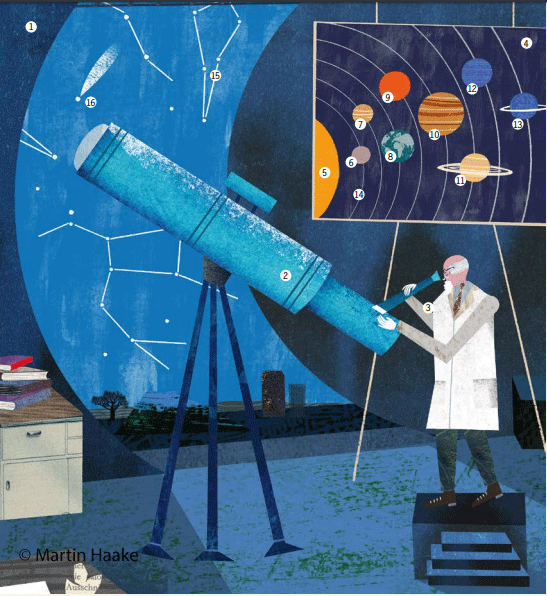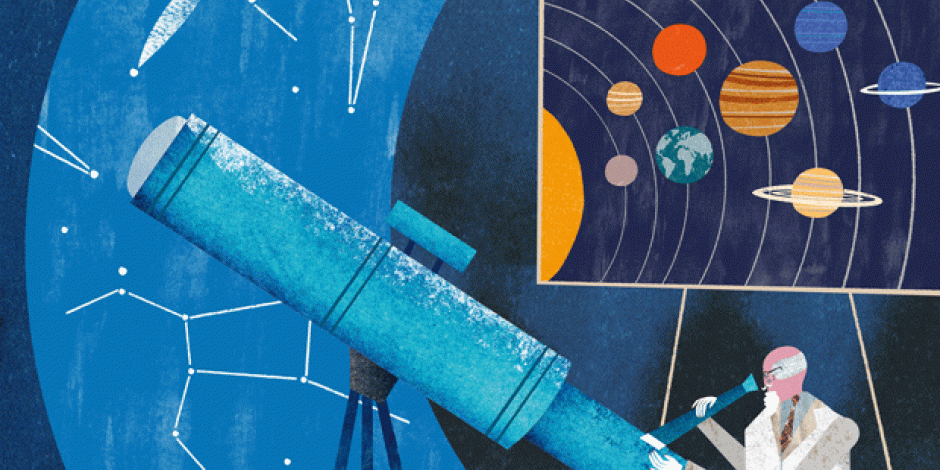In Spotlight 8/19, we present the language used to talk about outer space. Here, you can find the German translations and an audio file with the pronunciation for this issue’s Picture It.
- observatorySternwarteobservatory
- telescopeTeleskoptelescope
- astronomerAstronom(in)astronomer
- the solar systemdas Sonnensystemthe solar system
- the sundie Sonnethe sun
- MercuryMerkurMercury
- VenusVenusVenus
- EarthErdeEarth
- MarsMarsMars
- JupiterJupiterJupiter
- SaturnSaturnSaturn
- UranusUranusUranus
- NeptuneNeptunNeptune
- orbitUmlaufbahnorbit
- constellationSternbildconstellation
- meteorMeteormeteor
Listen to the correct pronunciation of these words here:

celestialHimmels-Celestial bodies
You and I may never walk on the moon, but why not try stargazingSternenbeobachtungstargazing instead? On a clear, warm summer night, pack your binocularsFernglasbinoculars and a star chartSternenkartestar chart and to head forsich auf den Weg machen nachhead for a spot in the country, away from light pollutionLichtverschmutzunglight pollution.
In August, in particular, there’s a good chance that you will see a shooting starSternschnuppeshooting star. Look out for the PerseidsPerseidenPerseids, the meteor showerMeteorschauermeteor showers that seem to to radiateausströmenradiate from the constellation of Perseus. They are visiblesichtbarvisible to the naked eye, so you won’t even need astronomical equipment — and don’t forget to make a wish!
If you’re not sure where to find Perseus, look to the north-east and search for the Ploughder Große Wagenthe Plough (N. Am. Big Dipper), whichto resembleähneln resembles a handcartLeiterwagen, Handkarrenhandcart. to trace(nach)zeichnen, (nach)ziehenTrace an imaginary line from its front end through the North Star to Cassiopeia. This constellation looks like the letter “W” turned on its side. From there, continue right at an angleWinkelangle of 90 degrees to find Mirfak, the brighthellbrightest star in Perseus.
There may be an observatory or a planetarium near where you live. Although most observatories are used for scientific research, some invite laypersonLaielaypersons to use their telescopes. Planetariums present shows about astronomy to the general public. Both are great places for learning more about our solar system with its eight planets, and about the wonderful galaxy the Milky WayMilchstraßeMilky Way, of which our solar system forms a part.
Related download
Explore the topic further by following this link:



